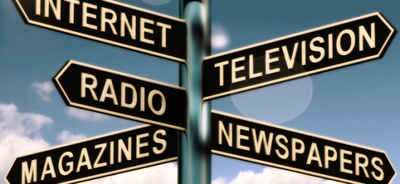Online Schools
Campus Schools
US Television Stations by State
Television Broadcasting Stations and Media
The 'first' generation of television sets' display (TV screen) had a small motor with a spinning disc and a neon lamp, working together to give a blurry reddish-orange picture about half the size of a baseball card.
Between 1935-1941, the 'electronic' television became operational with several countries began experimentally broadcasting with limited numbers of TV-sets. World War-II halted nearly all television broadcasting worldwide. With the rebirth of the television after World War-II , families had accumulated savings during the war years, and were eager to purchase homes, cars and other luxuries denied them during the war, and television sets were added to the 'must have' list. The explosion of TV sets into the American marketplace occurred during 1948-1949. The post-war sales boom for England followed a few years later. During the period 1950-1959 in the USA, the black and white television exploded onto the market at the beginning of the decade; mid-decade saw electronic color television and remote controls; and at the end of the decade some there were interesting styling changes and the introduction of transistorized television.
A television network Television Station (US) is an broadcasting entity that provides programs to individual television stations, which are only licensed to broadcast in a specific area. Each network can hold a few stations it owns and operates, usually in the big markets.
Is Broadcast Journalism the right major for you?
Broadcast Journalism is program that focuses on the methods and techniques for reporting, producing, and delivering news and news programs via radio, television, video/film media, and web; and that prepares individuals to be capable broadcast journalists, editors, producers, directors, and managers. Television and radio broadcasting schools give eager students an chance to learn what goes into making a quality productions for communicating over the airwaves.
The most common degree options in for aspiring broadcasters include the 2-year associate's and 4-year bachelor's degree programs. An undergraduate degree in broadcasting prepares students for various entry-level positions in the field. broadcast journalism majors take many of the same courses journalism majors do, such as history of mass media, ethical issues of journalism, and legal aspects of mass communications. In addition to learning to write clearly and objectively, you'll learn to operate audio, camera, and editing equipment; edit, produce, and direct a broadcast program; and practice on-air delivery techniques.
What can a broadcasting degree do for you: You get to help deliver news and information, moved entertainment, or enrich artistic and educational content to people. Your job may be in front of a television camera or through a radio microphone, or maybe behind the scenes. Broadcast journalism will also allow you to apply your skills to other areas including digital journalism, photojournalism, and newspaper and magazine reporting.
Whatever you have in mind, a broadcasting school can provide the essential training to get you going. Browse these communication & multimedia schools for degree options and course curriculum, prerequisites and financial aid information.





